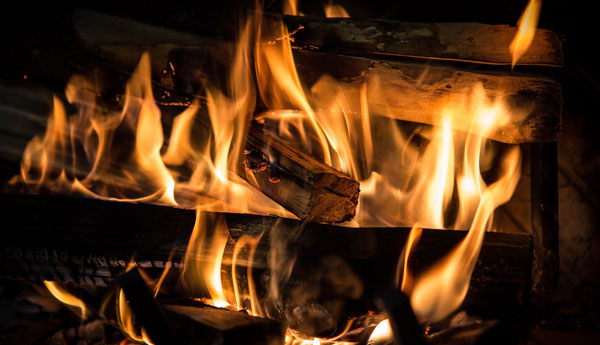
Looking for a fun family activity to while away the hours during the holiday lull? Have the kids run you out of tinder for your fireplace? Maybe its time to show them how to create one of the world’s oldest fire starters: the humble featherstick.
History
The origins of the featherstick, as is usual with such simple forms of technology, are rather vague. Many civilizations used such methods for starting fires, though most centered around simply creating thin wood shavings that would burst into flame at the slightest spark. A featherstick takes this a step forward, however, and some report the technique first consolidated with the Aztec peoples of Mesoamerica. Regardless of where it originates, the featherstick retains its usefulness all the way to the modern day.
How it Works
How a featherstick works is simple. It combines the easy-to-start properties of wood shavings, with the longer-burning nature of larger kindling. The principle is simple. The “feathers” are the small curls of wood that jut out from the stick. These can be lit either with a lighter, or if done right, even with the sparks off a ferro rod. Clustered together, these “feathers” will first burn quickly, then slow down as they group closer together. Finally, they’ll burn all the way into the core of the wood, setting the entire thing alight with their sustained and concentrated heat. Another great think about feathersticks, is it will work even on wood that has been rained on, as the dry core of the wood is exposed.
Fabrication
So how does one make such a fabulous implement? While it may sound deceptively simple, creation will actually take some practice. Find a branch that is between two and three inches in diameter, and at least 12 inches long. If you cannot find a piece that fits these dimensions, cut and baton it accordingly until it is roughly to size. Next, trim any bark off the outside of the wood. If the wood is damp, continue trimming until you reach dry wood (this is the reason behind the minimum diameter requirement–twigs less than two inches thick can become fully saturated).
Next, place the wood vertically on a hard surface, and put your knife to its side. Cut down the sides with the knife only slightly angled to level out any high points. This is an important step that many folks miss–without a level surface to work with, getting full-length feathers will be much harder. Once the surface is level and smooth (rounded is okay), bring your knife back to your starting point, and begin to shave down, with the intention of making one continuous shaving all the way to the bottom of the stick. Stop before you reach the bottom, so that the shaving stays attached. If you lose a curl or two starting out, don’t fret. As mentioned, this process will take some practice. Using the part of the blade closest to the handle may help, as that is the easiest section to control.
As you begin to amass curls at the bottom of the stick, push the curls away from the stick to give yourself more room, instead of moving your cuts up the stick. Doing the latter will result in curls that are too spaced out to be effective. If you’d like to add curls to either side of the main cluster, you can vary the angle of your knife. Tipping the knife up, will throw curls toward the end of your blade, while angling the handle down will do the opposite. By varying your cuts in such a manner, you can create a dense and full bundle of curls, or “feathers” at the base of your stick.
Lighting Up
Once you’ve got a full bundle of “feathers,” place it at the bottom of your wood stack like you would any standard kindling, and light it up. The feathers will burn, perhaps long enough to even ignite the other firewood if its slender enough, and eventually will fully ignite itself. After that, you’ll be roasting chestnuts in no time flat. Merry Christmas everyone, and a very happy New Year!
A humble homesteader based in an undisclosed location, Lars Drecker splits his time between tending his little slice of self-sustaining heaven, and bothering his neighbors to do his work for him. This is mainly the fault of a debilitating predilection for fishing, hunting, camping and all other things outdoors. When not engaged in any of the above activities, you can normally find him broken down on the side of the road, in some piece of junk he just “fixed-up.”

Dan says
Lars, some photos showing the technique would speak volumes.